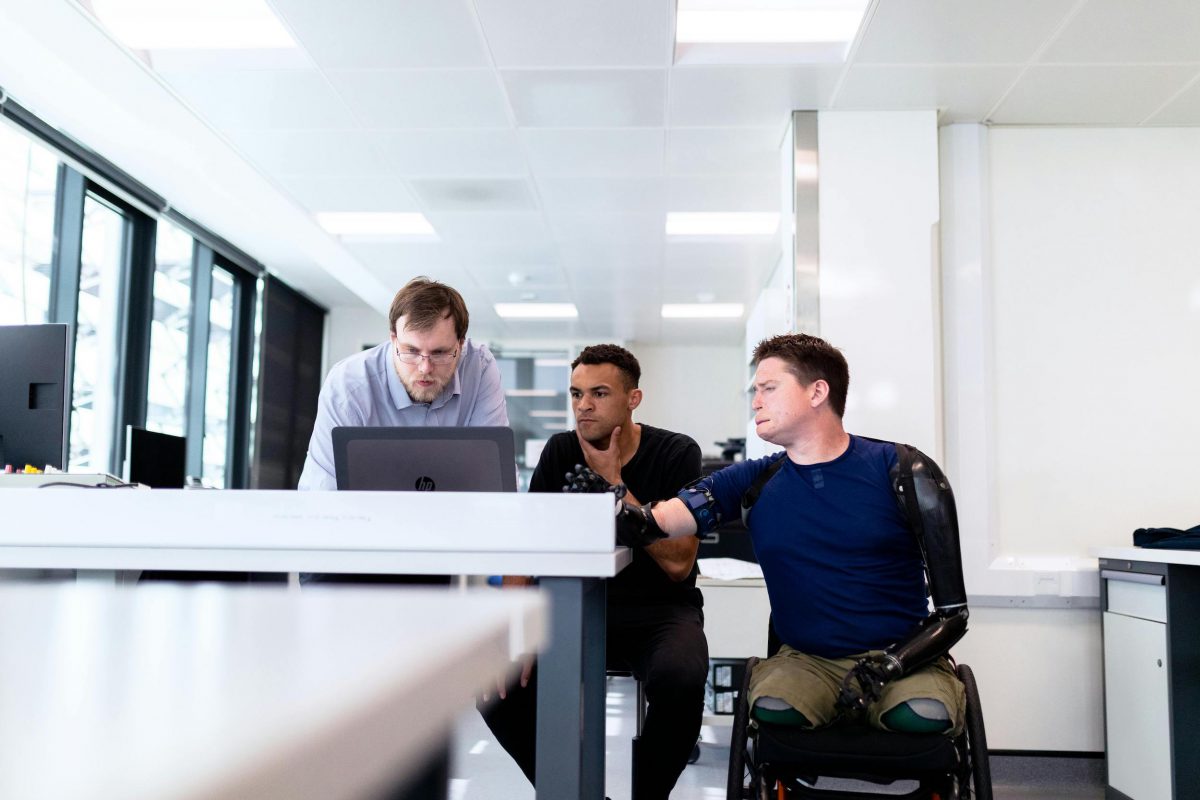Having had some form of invisible illness most of my working life—most of my life, actually—I’ve seen a lot of signs of ableism in the workplace.
Sometimes this comes from people who mean well but have no experience with a particular health condition. Other times it’s based on the assumption that someone would fake or exxagerate health issues to get out of work.
I don’t deny that there are people out there who might do that. However, most of the people I know with significant long-term health conditions play them down.
They may not even disclose their health issues to their employer because they’re worried about being discriminated against.
And, since the most common form of discrimination claim in the US in 2020 was disability discrimination, this is a legitimate concern.
So how can you avoid ableism and disability discrimination? Here are some tips from someone with personal experience with signs of ableism in the workplace:
Don’t offer unsolicited advice
“Have you tried lavender to help you sleep? What about going to bed earlier? There’s this really great supplement that—”
My whole life, on and off, I’ve struggled with insomnia. And, as much as I love lavender, it hasn’t helped.
But far too many colleagues have suggested it as a panacea to my brain that won’t quiet down.
Or suggested I can magically go to bed earlier and I’ll be able to adjust my sleeping pattern quicker than I can say “F1” (my favorite sport).
Unsolicited advice like this is unbelievably frustrating. It may be well-intentioned, but that doesn’t change how it feels to receive it.
It doesn’t take into account someone’s individual needs or what they might’ve already tried. People often volunteer it without listening to that person’s frustrations, or history, first.
If an employee has a diagnosis for a long-term illness, there’s a high chance they’ve already tried a lot of the basic solutions that you can find on Google…many of which don’t even have any scientific basis to them. (Take it from someone who reads the studies about them for fun.)
Listen to employees’ concerns—don’t assume what they need
Every employee with a disability will have different needs.
Many people with disabilities have a “cocktail of conditions” (thanks to my support worker for that term), too.
For example, I have fibromyalgia and ME/CFS. These conditions can be connected to ADHD. They can also weaken muscles and make it harder to exercise, further exacerbating my chronic pain. And all three come with sides of insomnia.
So what I need because of my chronic pain/ADHD combo is different from what someone with only chronic pain or only ADHD might need.
Many conditions can have dozens, if not hundreds, of symptoms. So it’s impossible to take a one-size-fits all approach. Health issues will show themselves in different ways depending on the person.
And that’s why it’s so important to listen to an employee’s needs in order to address signs of ableism at work.
Help employees adapt their work environment
Lots of different things can make employees’ working lives better or worse.
In addition to asking employees what they need, have a list of things you can offer.
Options that the UK’s Access to Work scheme, which helps get people with disabilities into work, provide include:
- Noise-cancelling headphones
- Touchscreen tablets or e-ink tablets
- An ergonomic keyboard or mouse
- A virtual assistant
- A better desk chair
Be mindful of energy drains
Full-time work, especially when it’s in an office, can be incredibly draining.
There’s constant stimuli in the office from people talking, flashing computer screens, colleagues’ deodorants, air fresheners, fluorescent lights, and more.
We may not consciously realize it (although I think more people do since the pandemic), but all these things assail our senses and drain us faster than if we’re working in our own spaces.
Not only that, but things like having to be in the office at a certain time can be hard for someone with a disability. Health conditions are often worse in the morning after the body has been in the same position all night.
This means an employee with a disability may be more productive if they can start or finish later, if they can work from home, or if they can work for fewer hours.
Sending an employee feedback survey helps to gauge employees’ wants and needs. That way, you can improve employee wellbeing and thereby productivity and engagement.
And, with Workrowd, you can automate survey sending, meaning you get all the answers in an easy-to-read dashboard with no effort on your end.
Embrace pacing
Pacing is the art of, well, pacing your energy levels. When I received my diagnosis, the doctor described pacing as doing slightly less on the good days and slightly more on the bad days. That way, in theory, my energy would balance out.
In the workplace, this could look like offering more breaks for employees rather than one long lunchbreak.
It’s not natural for us to be superglued to a desk chair for eight hours a day.
Even with a lunchbreak in between that’s far too long for us to sit down for.
A lot of chronic pain improves with moving more often. This is especially true for chronic back pain, which is one of the biggest reasons for workplace sickness.
So if you’re worried about absenteeism alongside signs of ableism in the workplace, enabling employees to move more often is one of the simplest solutions.
Allow employees to connect
Having any sort of long-term health condition can be isolating. A lot of people don’t get it (that’s where the unsolicited advice often comes from—people’s desire to “fix” us).
Enabling employees to connect with others who face similar struggles makes a huge difference. It means they feel less alone and there are people within the organization who can provide empathy and compassion when they’re having a bad day.
Sometimes, when someone talks about their illness, they’re not looking for a solution. They just need to externalize their feelings so that they don’t take over. The solution to that is listening.
That’s why employee groups can be such a powerful tool for connecting employees.
Workrowd can help you manage your employee groups and get more out of them—and therefore your employees.
Conclusion
Signs of ableism in the workplace can creep in in unexpected ways, especially if someone doesn’t have experience with disabilities, directly or indirectly.
It’s therefore important that team members, but especially managers and HR pros, are educated in the best ways to support people with disabilities.
This allows employees with disabilities to stay in the workplace, not face discrimination, and feel a sense of purpose—something that’s good for their mental wellbeing.
Businesses also get to be truly diverse instead of preaching diversity but not living it.
Are you looking for ways to address signs of ableism in the workplace? Workrowd has the tools you need. From standing up and managing employee groups, to collecting and visualizing employee feedback, we’re your one-stop shop.
If you’d like to learn how Workrowd can help you automate tasks and build a more inclusive workplace, visit us online or send us a note at hello@workrowd.com.





